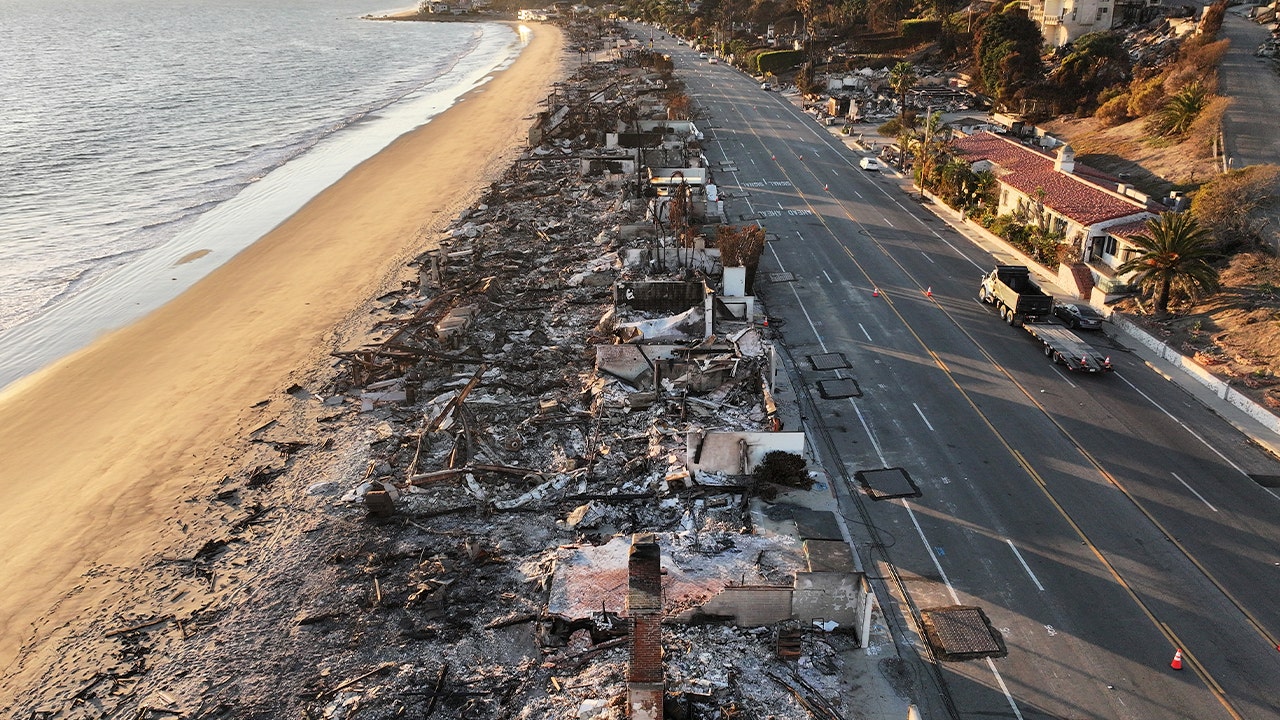Did Empty Reservoirs Fuel the Devastating Los Angeles Wildfires? Uncovering the Truth
The recent Los Angeles wildfires have left a trail of destruction, raising crucial questions about the role of water management in combating these devastating blazes. As the flames raged, a controversy erupted regarding the empty Santa Ynez Reservoir, near the epicenter of the Palisades Fire. This raises critical questions about whether our current water infrastructure is equipped to handle future extreme weather events and whether the lack of water in this key reservoir could have hampered firefighting efforts.
The Santa Ynez Reservoir: A Critical Piece of the Puzzle?
The Santa Ynez Reservoir, a significant water source in the area, sat empty since February 2024. A lawsuit filed against the Los Angeles Department of Water and Power (LADWP) alleges that repair delays driven by cost-cutting measures left the reservoir unavailable during the crucial time of the wildfires. The LADWP maintains that the shutdown was to comply with safe drinking water regulations, attributing the repair delays to its competitive bidding process. While this explanation highlights bureaucratic hurdles in efficient repairs, it's also a reminder of our increasingly unpredictable climate and the need for updated infrastructural strategies to counter worsening weather patterns.
Capacity Concerns and Infrastructure Limits
Even if the Santa Ynez Reservoir had been full, experts like Kathryn Sorensen, former water utility manager for two Arizona cities, question if it would've significantly impacted the fire's overall spread. The sheer scale of the wildfire might have overwhelmed the reservoir's capacity, even under optimal conditions. While supplemental water pressure could have potentially helped protect individual homes or businesses in localized areas, it likely wouldn't have affected an entire neighborhood's fate.
Cost-Cutting vs. Climate Change Resilience
The incident at Santa Ynez Reservoir reveals a challenging issue, one where cost-cutting measures may clash directly with the pressing demands for climate resilience. In this context, it's important to engage in proactive planning and adaptation rather than playing catch-up with repairs when catastrophes happen. If we aim to improve disaster response and better protect lives and properties from extreme weather events in the future, investments in improved infrastructure may often need to supercede other competing financial concerns. Moreover, the timely implementation of updated safety and regulatory policies becomes essential.
Rethinking Water Management in a Changing Climate
Experts say this event should be a wake-up call. Looking towards a future marked by more frequent and severe wildfires, it’s crucial to review our water management strategies. A critical analysis is needed of reservoir capacities, operational priorities, water distribution methods, and how these elements synergistically relate to effective wildfire management. Our outdated infrastructure and policies may not fully consider the risks of increasingly extreme climate events. The Santa Ynez Reservoir's emptiness should prompt comprehensive review of infrastructure preparedness for such climate extremes.
Learning from the Past to Secure the Future
Post-disaster evaluations provide valuable lessons and allow us to build a better, more resilient infrastructure for the future. Understanding that climate change is influencing everything about how we deal with natural disasters is a step toward informed and appropriate preventative policies and responses. Considering water systems not only for potable water access but also for their role in disaster preparedness is fundamental to efficient water management planning. Implementing appropriate regulatory and infrastructural changes, coupled with rigorous testing, will likely be critical to preparing us for even more devastating consequences in the near future. Effective water strategies will necessitate better and more robust collaboration amongst local, regional, and federal organizations and municipalities, as the effective distribution and management of water for fire prevention and response is a truly complex undertaking.
Policy Implications: Preventing Future Disasters
This incident has major implications for policymakers, underscoring the critical need for investment in water infrastructure and improved wildfire prevention strategies. It demands an urgent review of current regulations and the adoption of more climate-resilient strategies. In order to protect against future environmental crises of this nature, the prioritization of long-term prevention strategies and preparedness for extreme events needs to be implemented far more swiftly and decisively.
The Urgent Call for Policy Overhaul
We must update policies to consider climate change's impact on the risks of future wildfires. Reassessments of water management, urban development, and forestry policies need to become far more common and well-resourced as the devastating consequences of climate inaction demonstrate the high costs of delayed policy response. The events around Santa Ynez Reservoir highlight how short-sighted decision-making, coupled with a lack of sufficient infrastructural investments and a broader climate preparedness, has proven inadequate to protect us against this extreme weather event. More proactive prevention and mitigation strategies are vital. Collaboration and proactive preparedness are central to successfully adapting to climate changes.
Take Away Points
- The empty Santa Ynez Reservoir underscores the crucial need for proactive investment in water infrastructure that can withstand the impact of climate change and support emergency efforts such as fighting devastating wildfires.
- The lack of readily-accessible water could have potentially made a small difference on individual buildings, but probably would have made little impact on neighborhood level consequences.
- Current regulations need review and updates to account for the influence of climate change and extreme weather events, as they directly impact both disaster response, recovery, and preventative strategies.
- Proactive policies need immediate and concerted implementation. Local, regional, and federal cooperation becomes central to future climate preparedness and responsiveness.
- The Los Angeles wildfires should serve as a powerful reminder of our need to prepare for increasingly extreme environmental events through improved resource and preparedness policies. Our failure to invest strategically today guarantees far higher costs – both financial and human – in the future.




